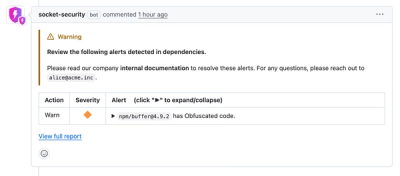
Security News
Crates.io Users Targeted by Phishing Emails
The Rust Security Response WG is warning of phishing emails from rustfoundation.dev targeting crates.io users.
React Native UI components for Expo.
Check out ui.crossplatformkorea.com
cpk-ui is a foundational design system and UI components library managed by Cross-Platform Korea. It is built using our preferred technologies, including emotion, typescript, jest, react-native-testing-library, expo, and storybook.
cpk-ui aims to provide user-friendly, lightweight, and adaptable UI components. It emphasizes customizable theme variations and a responsive layout to enhance developer experience.
cpk-ui is optimized for React Native performance using React's built-in optimization features:
For detailed performance information, see our Performance Guide.
expo install cpk-ui @emotion/react @emotion/native @expo/vector-icons react-native-gesture-handler react-native-svg expo-screen-orientation @expo/match-media expo-haptics
# Using yarn
yarn add cpk-ui @emotion/react @emotion/native @expo/vector-icons react-native-gesture-handler react-native-svg expo-screen-orientation @expo/match-media
# Install expo modules
npx install-expo-modules@latest
We focus on supporting iOS, Android, and web platforms, enabling expo users to write efficient and reliable cross-platform code. For more insights into the project’s direction, refer to the cpk-ui strategy.
import {CpkProvider} from 'cpk-ui';
<CpkProvider>
<App />
</CpkProvider>;
The embedded
thememodule functionality provides the ability to createlightanddarkthemes.
light and dark themeThe light and dark theme color definitions are provided as examples above. They are objects that contain color properties for different UI components and states.
CpkProviderWhen integrating with CpkProvider, you will provide your defined light and dark themes as the custom theme:
<CpkProvider customTheme={{light, dark}}>
<App />
</CpkProvider>
cpk-ui uses Pretendard as its default font. The fonts are automatically installed with cpk-ui, but you must confirm they are loaded using assetLoaded from useCPK.
import {useCPK} from 'cpk-ui';
const {assetLoaded} = useCPK();
if (!assetLoaded) {
return <Loading />;
}
return <Main />;
Integrate Phosphoricons easily using the Icon component.
import {Icon} from 'cpk-ui';
<Icon name="..." color="#AAA" size={32} />;
cpk-ui uses Pretendard as its default font. The font families include Pretendard, Pretendard-Bold, and Pretendard-Thin. From version 0.2.1, these fonts are automatically installed when you add cpk-ui. However, it is important to ensure that the fonts are loaded properly using assetLoaded from the CpkProvider.
import {useCPK} from 'cpk-ui';
const {assetLoaded} = useCPK();
if (!assetLoaded) {
// Render loading state
return ...;
}
return <Main/>
| Package | Version |
|---|---|
| react | >=16.13 |
| react-native | >=0.58 |
| emotion | >=11.0.0 |
| emotion/react | >=11.0.0 |
| emotion/native | >=11.0.0 |
| @expo/vector-icons | * |
If you encounter errors when using "cpk-ui" with expo-web, follow these steps to configure webpack:
@expo/webpack-configyarn add @expo/webpack-config
Create a webpack.config.js file in your project root and add the following configuration:
const createExpoWebpackConfigAsync = require('@expo/webpack-config');
module.exports = async function (env, argv) {
const config = await createExpoWebpackConfigAsync(
{
...env,
babel: {
dangerouslyAddModulePathsToTranspile: ['cpk-ui'],
},
},
argv,
);
return config;
};
Read the Contributing Guide before submitting pull requests. Thank you to everyone contributing to this project!
FAQs
React Native UI components for [Expo](https://expo.dev).
The npm package cpk-ui receives a total of 1 weekly downloads. As such, cpk-ui popularity was classified as not popular.
We found that cpk-ui demonstrated a healthy version release cadence and project activity because the last version was released less than a year ago. It has 0 open source maintainers collaborating on the project.
Did you know?

Socket for GitHub automatically highlights issues in each pull request and monitors the health of all your open source dependencies. Discover the contents of your packages and block harmful activity before you install or update your dependencies.

Security News
The Rust Security Response WG is warning of phishing emails from rustfoundation.dev targeting crates.io users.

Product
Socket now lets you customize pull request alert headers, helping security teams share clear guidance right in PRs to speed reviews and reduce back-and-forth.

Product
Socket's Rust support is moving to Beta: all users can scan Cargo projects and generate SBOMs, including Cargo.toml-only crates, with Rust-aware supply chain checks.